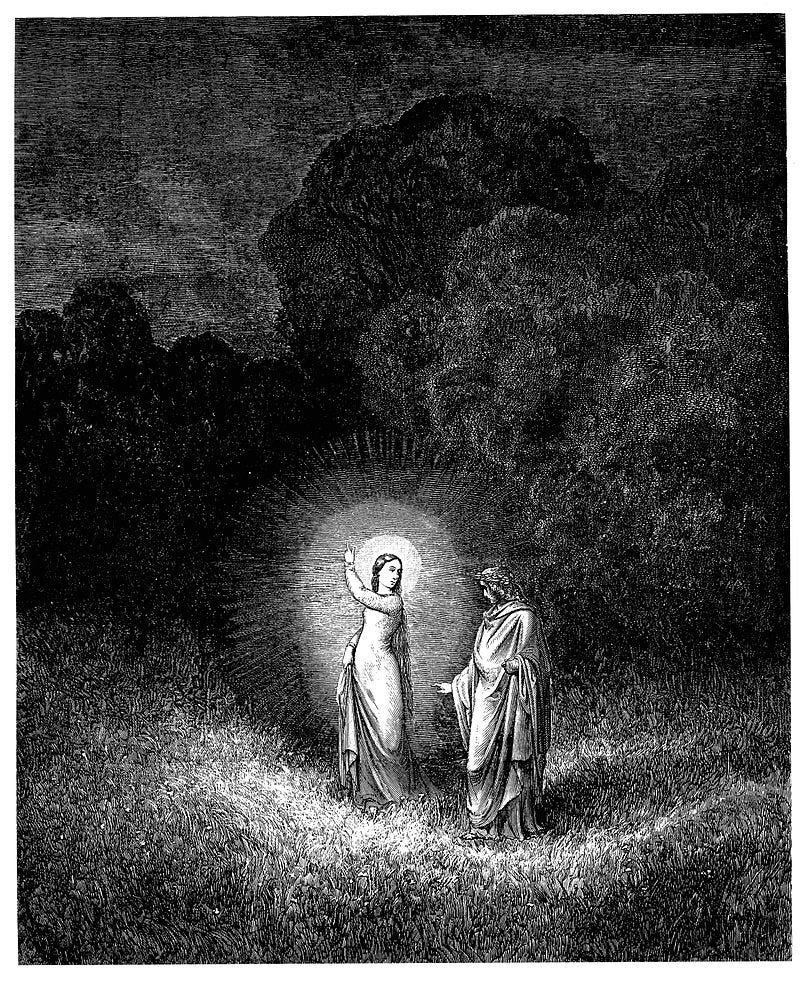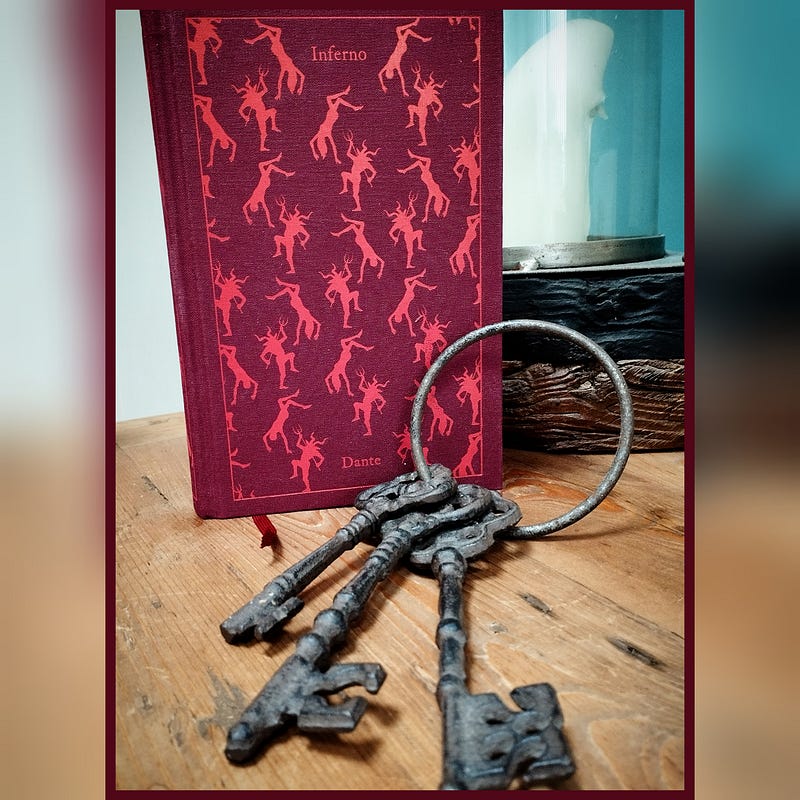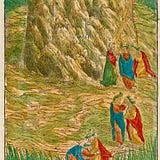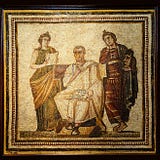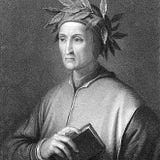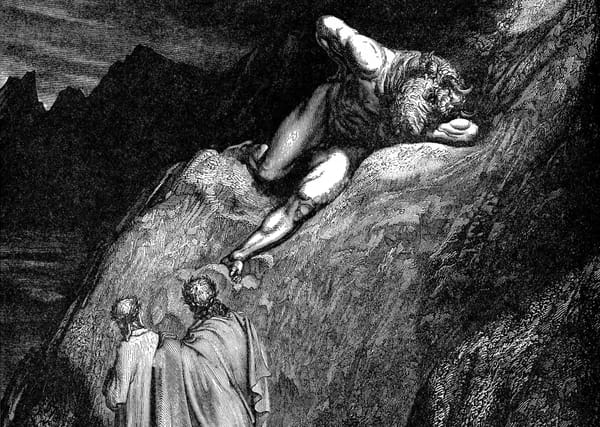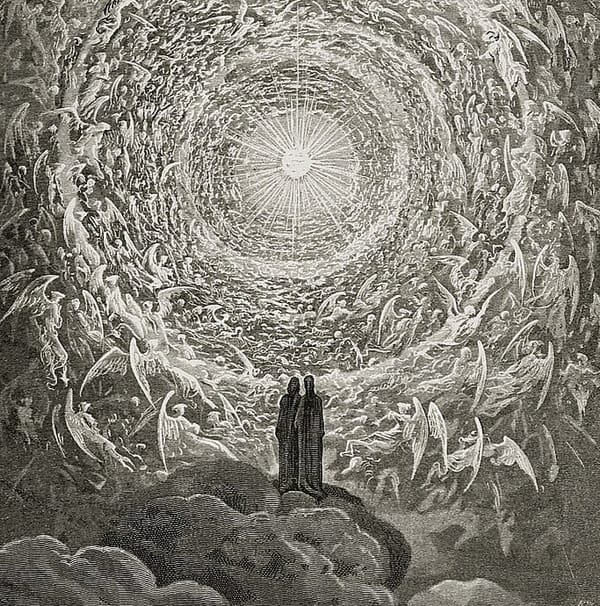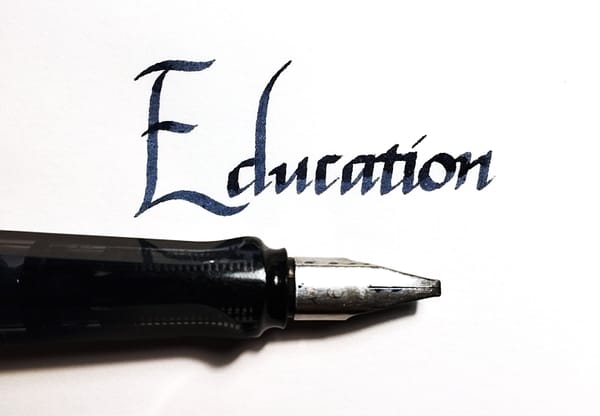Dante’s Inferno: Canto I
The first chapter and review of the Divine Comedy, a descriptive analysis and notes to spark your interest and curiosity!
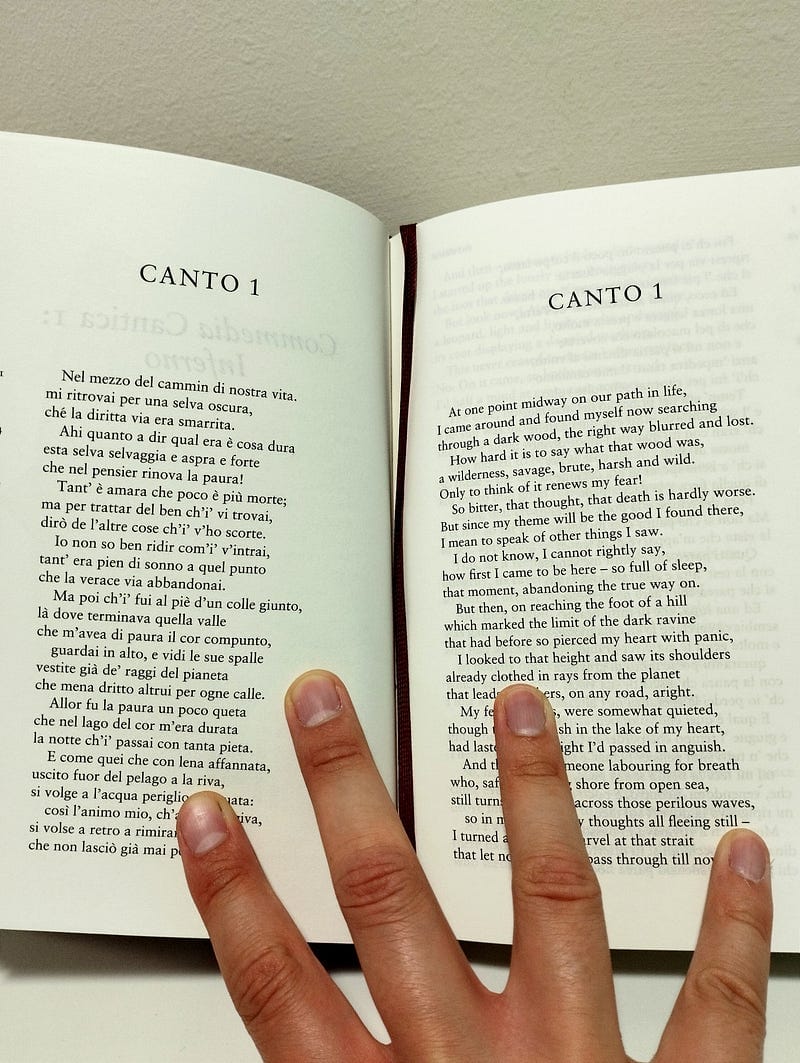
THE DIVINE COMEDY SERIES
Dante’s Inferno: Canto I
At one point midway on our path in life,
I came around and found myself searching through a dark wood,
the right way blurred and lost.
Line 1, Canto I (tr. Robin Kirkpatrick, Penguin Readers)
This is how Canto I of the Divine Comedy starts, serving as the gateway to the infernal realms.
In this descriptive analysis, we delve into the intricate details of the first chapter, examining its vivid imagery, evocative language, and symbolic elements. With this exposition, I’ll aim to capture the essence of Dante Alighieri’s journey, as he embarks on an awe-inspiring descent into the depths of Hell.
A dark forest
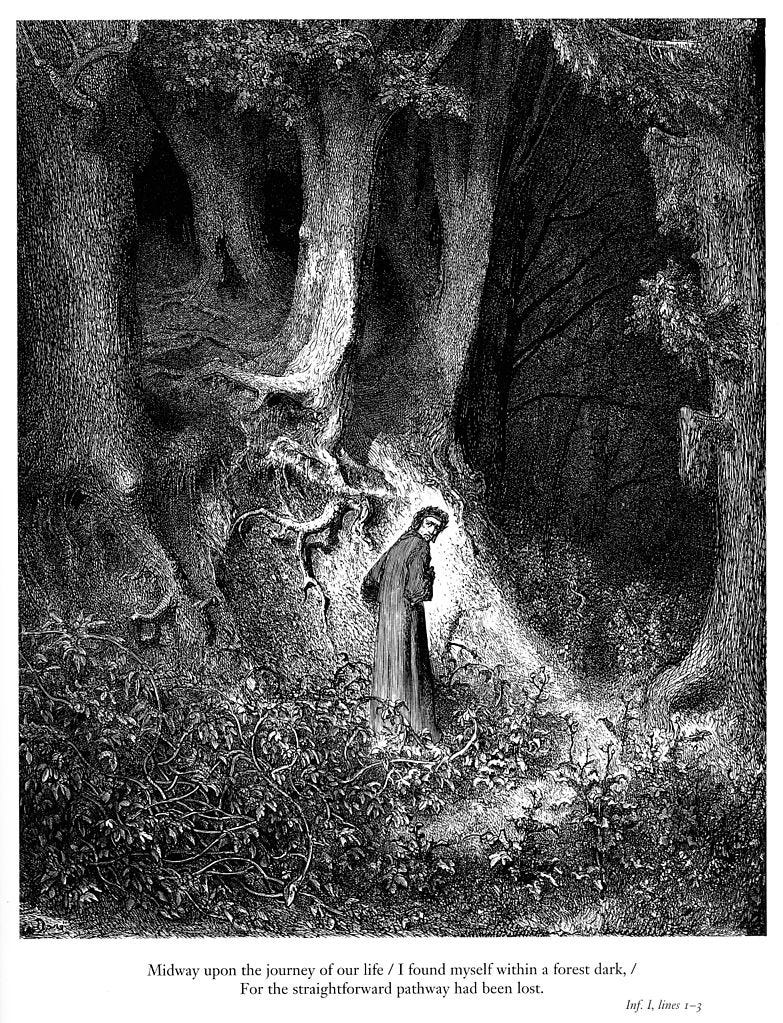
Canto I opens with Dante midway through the journey of his life. Often this is referenced as him writing about being a middle-aged man in medieval times (35 years old), although I do not agree with it.
I find a better interpretation in just taking it as him living his path of life in the middle of living it, without thinking too much about age.
The poet gets lost and finds himself in a dark forest, symbolizing his spiritual and moral confusion. The dense foliage, suffused with gloom, represents the entanglement of sin and the consequences of straying from the path of righteousness. Through this imagery, Dante portrays the human condition when confronted with the consequences of their actions, lost and disoriented in a world of moral ambiguity.
Being muddled makes him vulnerable, and certainly fearing for his actions and sins committed in his lifetime. The way forward may be confused, but a path with its geometry of beginnings, middles and ends, exists.
A bit further, Alighieri sees a hill, a symbol of redemption and hope (Especially in the Psalms of the old testament), so he takes a bit of courage and starts walking towards it.
Three Beasts
As the Italian poet attempts to navigate his way out of the forest towards the previously mentioned hill, he encounters three beasts: a leopard, a lion, and a she-wolf.
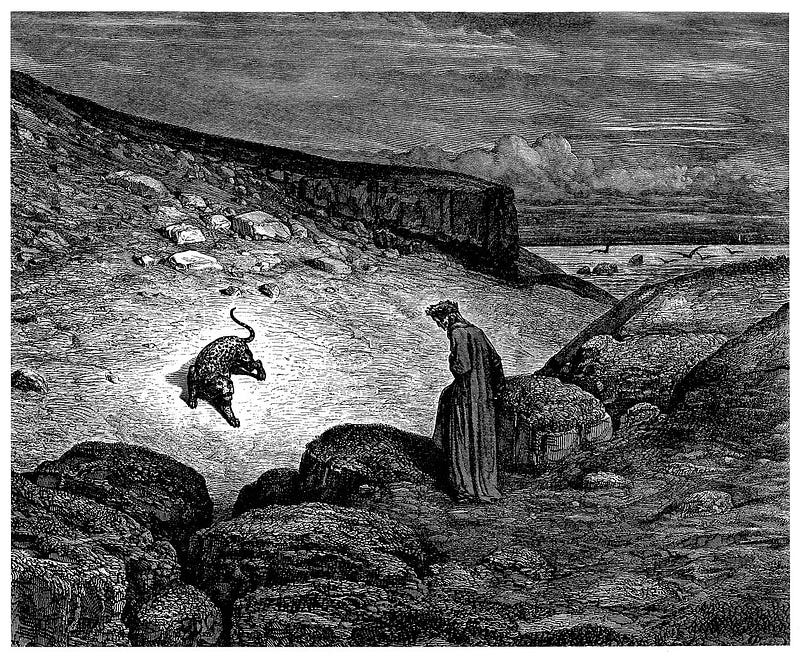
Each beast represents a specific vice or sin that obstructs the journey towards enlightenment. The leopard embodies false pleasure, the lion signifies pride and violence, and the she-wolf represents incontinence or unbridled desire/avarice. These beasts personify the moral weaknesses and temptations that impede the human soul from reaching a state of spiritual purity.
The three creatures seem to be drawn from the Lamentations of Jeremiah 5:6, an old testament book to which Dante showed particular devotion.
It is also important to note that the beings of this sequence are introduced by the word for “seeming” (parea) or with the evocation of unrealized or unreal conditions that are expressed by the Italian subjunctive: these are not actuals beasts, but rather beasts of the mind.
The writer has no solution for how to get out of this situation. However, it is, above all, the figure of Virgil who expresses Dante’s understanding of a solution.
Virgil’s Arrival
In Dante’s distress and desperation, the renowned Roman poet Virgil appears as his guide. He represents reason, wisdom, and human intellect. Also, one of the best writers from whom Alighieri took inspiration from (see Aeneid). His arrival signifies the importance of rationality and education in navigating the complexities of life. Virgil, being a pagan, serves as a bridge between the mortal world and the realms of damnation, offering Dante guidance through the treacherous journey ahead.
The poet has now been drawn out of himself into a world where the traditions of civilization deriving from Rome can be enlisted against the confusions of the dark wood.
Refusal and Divine Intervention
Initially, the Augustan poet hesitates to accompany Dante, citing his inability to enter Heaven due to his pagan status. This moment highlights the hierarchical structure of the afterlife, where only the divine can guide souls to salvation. However, in Canto II we will see that Alighieri’s despair catches the attention of Beatrice, his beloved, who intercedes on his behalf. Beatrice’s plea to the heavens results in divine intervention, granting Virgil permission to guide the protagonist through Hell. This intervention emphasizes the power of love and compassion as catalysts for spiritual transformation.
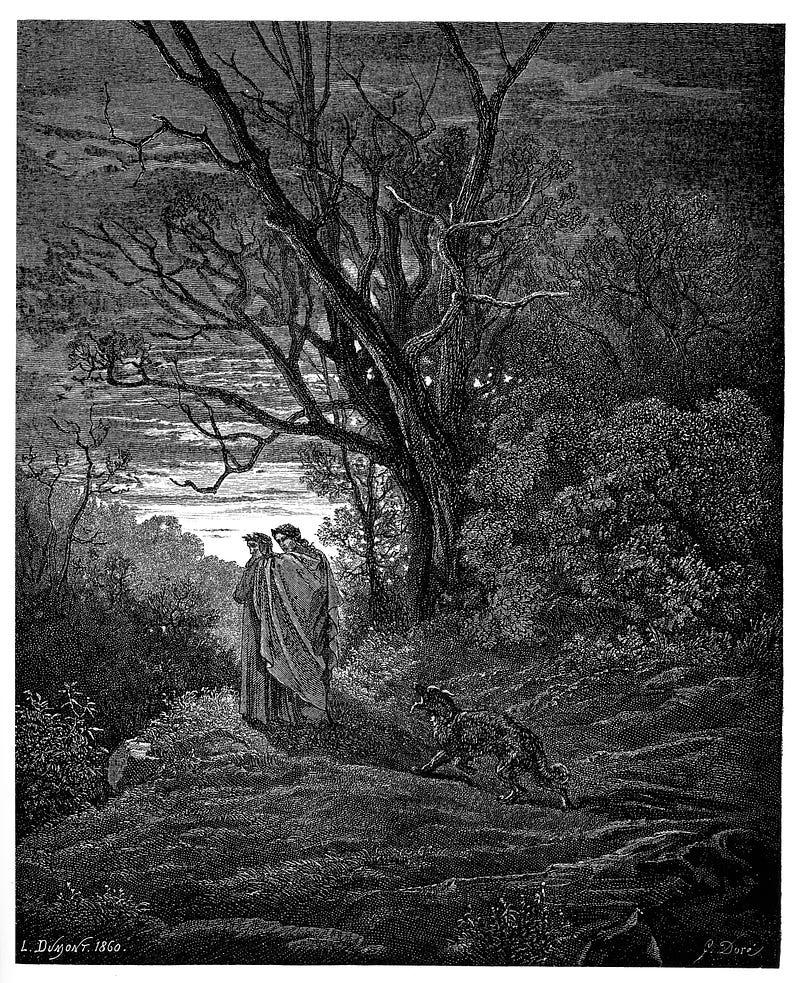
The Descent Begins
With Virgil as his guide, Alighieri embarks on his harrowing journey into the abyss. As they approach the gate of Hell, Dante’s senses become overwhelmed by the cacophony of anguished cries and mournful laments echoing from within.
Yet from the outset, there are ambiguities about the Roman poet, he himself confesses that he remains a rebel against the divine law, and movingly he is the one who “did not know” the name of the true God.
The vivid depiction of auditory torment intensifies, with the two men starting to walk in a chilling atmosphere, preparing the reader for the horrors that lie ahead.
Conclusion
Canto I of the Divine Comedy presents a captivating and detailed portrayal of the initial stages of the Florentine poet's descent into Hell. Through rich imagery and symbolic elements, Dante conveys the moral and spiritual implications of straying from the righteous path. The dark forest, the menacing beasts, and the intervention of Virgil and Beatrice all contribute to the intricately woven tapestry of Dante’s poetic vision.
There is a lot I’ve missed in this descriptive analysis, and Canto I is packed with terzine dense of metaphors and allegories.
I hope it will spark your curiosity to learn and research more about the world of long narrative poems.
If you want to know more and read the original side by side with some commentary, I strongly recommend the version from Columbia University, with commentary from Teodolinda Barolini.
Ready for Canto II ? Follow this link to read it now.
If you liked this chapter, as usual, don’t forget to clap, follow and subscribe. Thank you and see you next!
Useful Links
